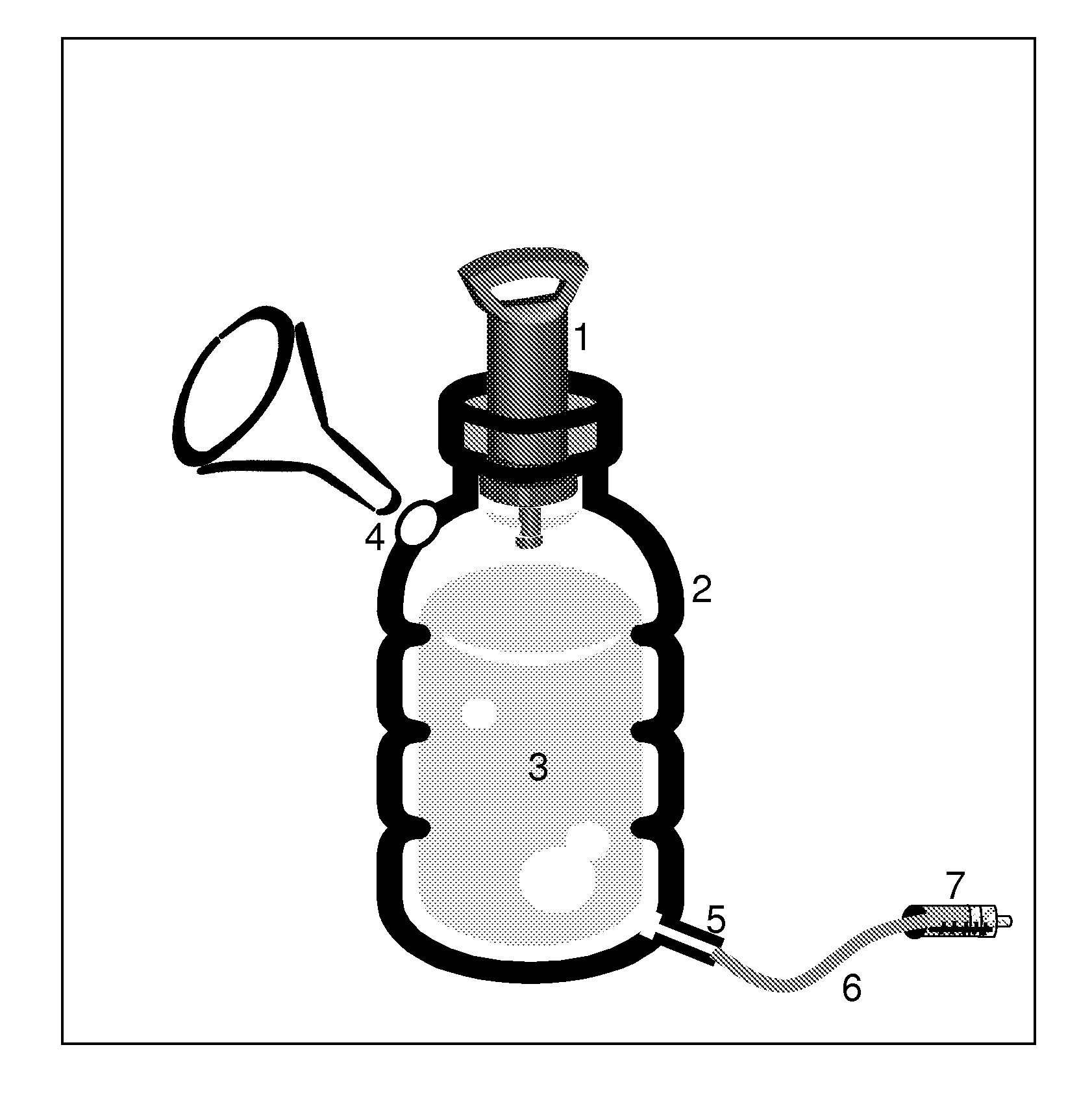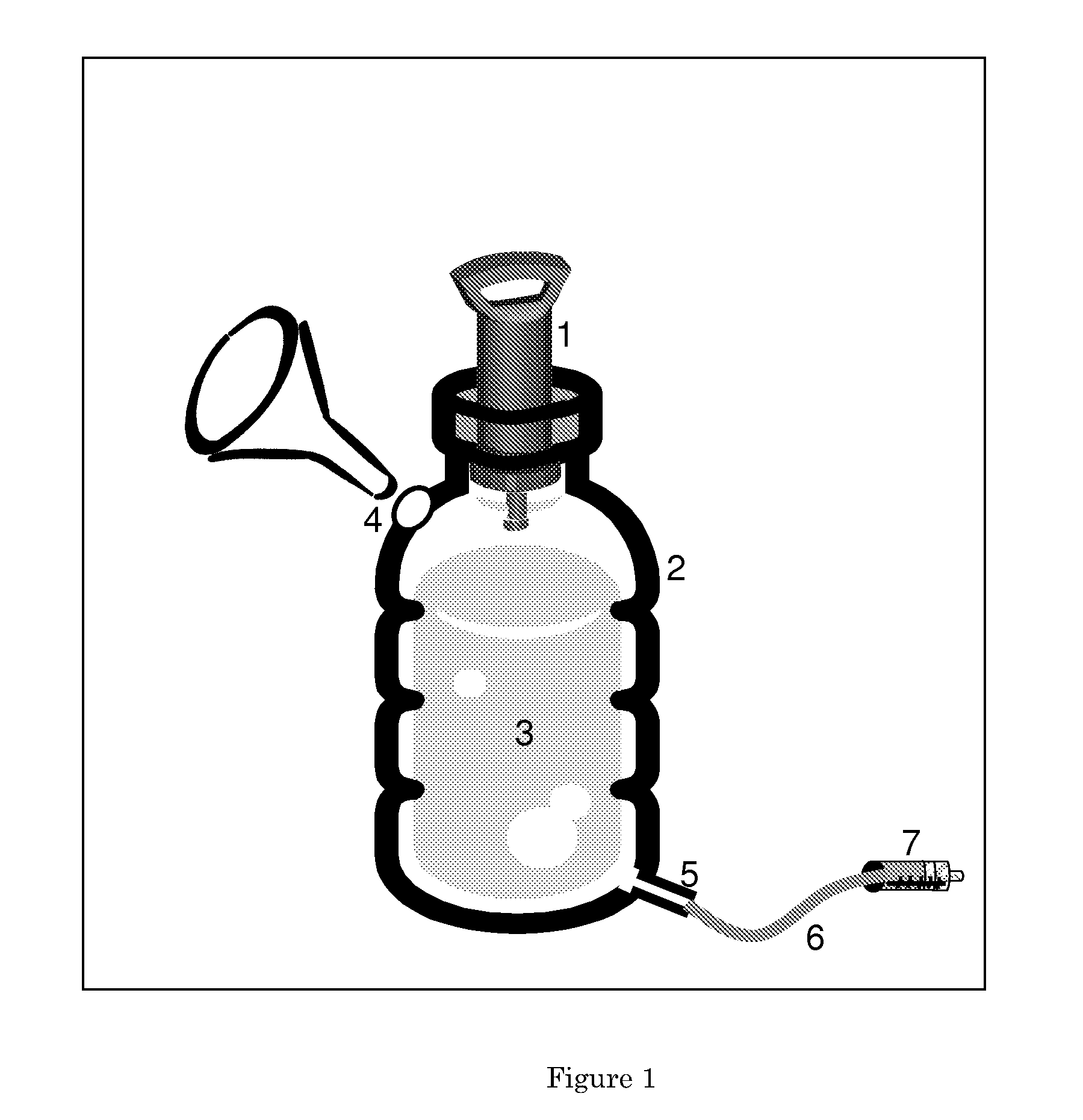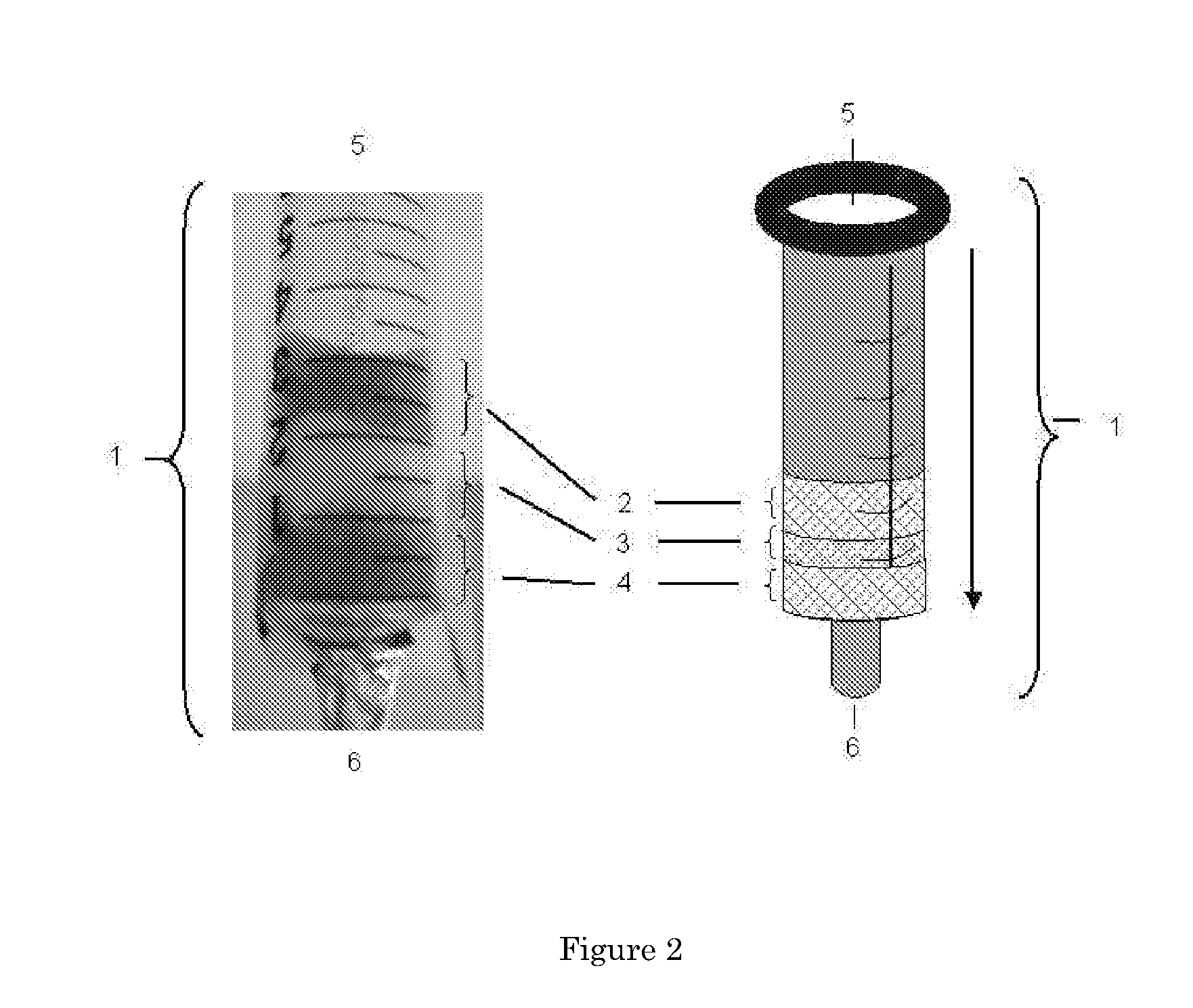System for detecting microbial contamination
a technology for detecting systems and microbial contamination, applied in biochemistry equipment, biochemistry equipment and processes, instruments, etc., can solve problems such as lack of systems for assessing the bacteriological quality of water, unsafe water or water of poor bacteriological quality, and contamination of drinking water with animal and human excrement, etc., to achieve simple, cheap, robust and fast, and suitable for on-site detection
- Summary
- Abstract
- Description
- Claims
- Application Information
AI Technical Summary
Benefits of technology
Problems solved by technology
Method used
Image
Examples
example 1
Adsorbent Materials
[0109]An amount of 0.5 ml of an overnight liquid culture of E. coli cells (strain K12) was suspended in 4.5 ml of saline (0.9 wt. % NaCl) in a test tube containing an amount of 0.5 ml of a suspension of an adsorbent material to be tested for cell-adsorbing properties. The following suspensions were used. Suspensions of 30 wt % (2 grams in 5 ml saline (0.9% NaCl)) were prepared from the oxides, the sand and the perlite. The suspensions from the Ion Exchange Media Sampler Pack were used as provided by the manufacturer or, in the case of powder, suspended at 30 wt. % in saline. An amount of 0.5 ml of the said suspensions was added to 5 ml of test culture (0.5 ml culture+4.5 ml saline).[0110]Titanium oxide (as Titanium(IV) oxide, technical, ≧99%; Sigma Aldrich Cat. No. 14021_Riedel);[0111]Zirconium oxide (as Zirconium(IV) oxide, powder, 5 μm, 99% trace metals basis; Sigma Aldrich Cat. No. 230693_Aldrich);[0112]Hafnium oxide (as Hafnium(IV) oxide, powder, 98%, Sigma Al...
example 2
Detection of Adsorbed Cells
[0121]To the pellet of the experimental tests described in Example 1 was added an amount of 1 ml of B2P ColiQuik reagent (B2P limited, Auckland, New Zealand). The pellets were incubated at 37° C. and the time for the chromogen to change color from blue to pink was monitored. These incubation times are indicated in Table 1 below.
[0122]The materials exhibiting the highest level of attachment of the cells also, generally, result in very early change of color of the chromogen.
[0123]The non-visibility of the chromogen in the case of iron oxide and manganese oxide relates to the fact that the intense color of the material itself prevents the observation of a change in color of the chromogen.
TABLE 1Efficacy of binding of E. coli to different adsorbent materials(Example 1), and detection test using the B2P ColiQuik reagent on attached cells (Example 2).% attached B2P staining Type of adsorbent materialcells(hrs)NONEControle 0%overnightControle 0%overnightControle ...
PUM
| Property | Measurement | Unit |
|---|---|---|
| inner volume | aaaaa | aaaaa |
| inner volume | aaaaa | aaaaa |
| inner volume | aaaaa | aaaaa |
Abstract
Description
Claims
Application Information
 Login to View More
Login to View More - R&D
- Intellectual Property
- Life Sciences
- Materials
- Tech Scout
- Unparalleled Data Quality
- Higher Quality Content
- 60% Fewer Hallucinations
Browse by: Latest US Patents, China's latest patents, Technical Efficacy Thesaurus, Application Domain, Technology Topic, Popular Technical Reports.
© 2025 PatSnap. All rights reserved.Legal|Privacy policy|Modern Slavery Act Transparency Statement|Sitemap|About US| Contact US: help@patsnap.com



